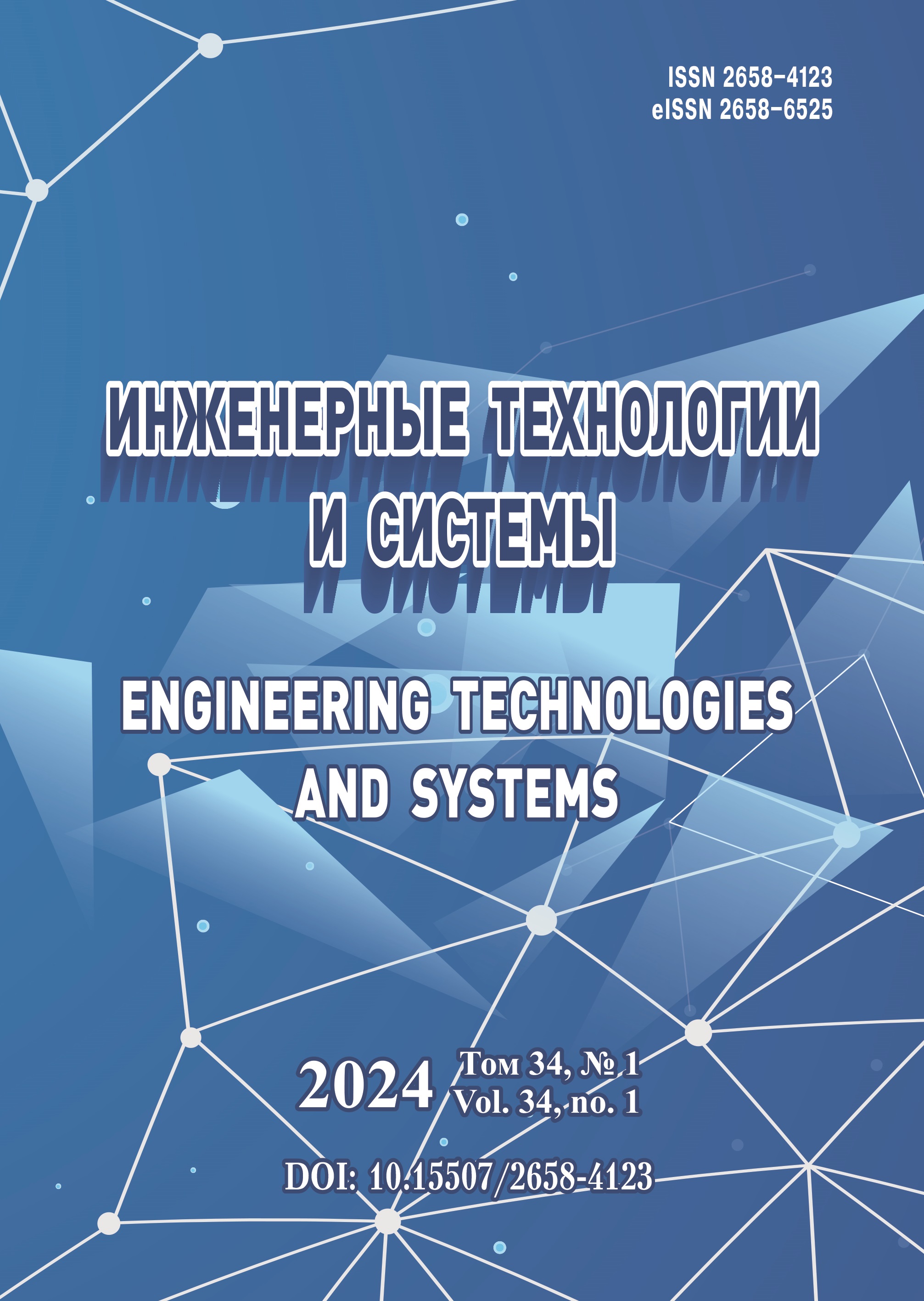UDK 621.311.243:004.051
DOI: 10.15507/2658-4123.030.202003.480-497
Improving the Efficiency of Solar Power Plants
Dmitriy S. Strebkov
Scientific Director of Federal Scientific Agroengineering Center VIM (5, 1st Institutskiy Proyezd, Moscow 109428, Russia), Academician of RAS, D.Sc. (Engineering), Professor, Researcher ID: K-4157-2017, ORCID: https://orcid.org/0000-0002-2572-801X, Scopus ID: 7004652438, This email address is being protected from spambots. You need JavaScript enabled to view it.
Yuriy Kh. Shogenov
Chief of Crop Production and Mechanization Processes Sector of Department of Agricultural Sciences, Russian Academy of Sciences (32А Leninskiy Prospekt, Мoscow 119334, Russia), Corresponding Member of RAS, D.Sc. (Engineering), Researcher ID: AAR-1140-2020, ORCID: https://orcid.org/0000-0002-7588-0458, Scopus ID: 6506035081, This email address is being protected from spambots. You need JavaScript enabled to view it.
Nikolay Yu. Bobovnikov
Postgraduate Student of Federal Scientific Agroengineering Center VIM (5, 1st Institutskiy Proyezd, Moscow 109428, Russia), Researcher ID: D-2515-2016, Scopus ID: 57207841126, This email address is being protected from spambots. You need JavaScript enabled to view it.
Introduction. An urgent scientific problem is to increase the efficiency of using solar energy in solar power plants (SES). The purpose of the article is to study methods for increasing the efficiency of solar power plants.
Materials and Methods. Solar power plants based on modules with a two-sided working surface are considered. Most modern solar power plants use solar modules. The reflection of solar radiation from the earth’s surface provides an increase in the production of electrical energy by 20% compared with modules with a working surface on one side. It is possible to increase the efficiency of using solar energy by increasing the annual production of electric energy through the creation of equal conditions for the use of solar energy by the front and back surfaces of bilateral solar modules.
Results. The article presents a solar power plant on a horizontal surface with a vertical arrangement of bilateral solar modules, a solar power station with a deviation of bilateral solar modules from a vertical position, and a solar power plant on the southern slope of the hill with an angle β of the slope to the horizon. The formulas for calculating the sizes of the solar energy reflectors in the meridian direction, the width of the solar energy reflectors, and the angle of inclination of the solar modules to the horizontal surface are given. The results of computer simulation of the parameters of a solar power plant operating in the vicinity of Luxor (Egypt) are presented.
Discussion and Conclusion. It is shown that the power generation within the power range of 1 kW takes a peak value for vertically oriented two-sided solar modules with horizontal reflectors of sunlight at the installed capacity utilization factor of 0.45. At the same time, when the solar radiation becomes parallel to the plane of vertical solar modules, there is a decrease in the output of electricity. The proposed design allows equalizing and increasing the output of electricity during the maximum period of solar radiation. Vertically oriented modules are reliable and easy to use while saving space between modules.
Keywords: solar energy, solar module, solar energy reflectors, electricity, solar radiation, solar reflectors, load factor
Acknowledgements: The authors thank A. E. Irodionov Ph.D. (Engineering) for his assistance in computer modeling parameters of the solar power plant.
For citation: Strebkov D.S., Shogenov Yu.Kh., Bobovnikov N.Yu. Improving the Efficiency of Solar Power Plants. Inzhenerernyye tekhnologii i sistemy = Engineering Technologies and Systems. 2020; 30(3):480-497. DOI: https://doi.org/10.15507/2658- 4123.030.202003.480-497
Contribution of the authors: D. S. Strebkov – development of the research concept, scientific guidance, formulation of the research goal and objective, editing the text, adjustment of the conclusions; Yu. Kh. Shogenov – analysis of research results, making calculations, writing the article, drawing conclusions; N. Yu. Bobovnikov – correction of literary analysis, finalizing the text, clarification of conclusions.
All authors have read and approved the final manuscript.
Received 15.05.2020; revised 18.06.2020; published online 30.09.2020
REFERENCES
1. Strebkov D.S., Bobovnikov N.Yu. Technical and Economic Indicators of Solar Power Plants. Applied Solar Energy. 2018; (54):456-460. (In Eng.) DOI: https://doi.org/10.3103/S0003701X18060142
2. Strebkov D.S., Shogenov A.Kh., Shogenov Yu.Kh., et al. Solar Energy: State and Development Prospects. Tekhnika i oborudovanie dlya sela = Machinery and Equipment for Rural Area. 2019; (3):43-48. (In Russ.) DOI: https://doi.org/10.33267/2072-9642-2019-3-43-48
3. Lidorenko N.S., Evdokimov V.M., Strebkov D.S., et al. New Models of Solar Cells and Prospects for Their Optimization. Applied Solar Energy. 1978; 14(3):1-12. (In Eng.)
4. Semiconductor Photoelectric Generator: Patent 3948682 USA. No. 519697; appl. 31.10.1974; publ. 06.04.1976. 11 p. Available at: https://patentimages.storage.googleapis.com/8a/96/45/61d12828bc5304/US3948682.pdf (accessed 10.08.2020). (In Eng.)
5. PoulekV., Strebkov D.S., Persic I.S,. et al. Towards 50 Years Lifetime of PV Panels Laminated with Silicone Gel Technology. Solar Energy. 2012; 86(10):3103-3108. (In Eng.) DOI: https://doi.org/10.1016/j.solener.2012.07.013
6. Beinert A.J., Imm M., Benick J., et al. Silicon Solar Cell–Integrated Stress and Temperature Sensors for Photovoltaic Modules. Progress in Photovoltaics: Research and Applications. 2020; 28(7):1-8. (In Eng.) DOI: https://doi.org/10.1002/pip.3263
7. Strebkov D.S. Advanced Tendencies in Development of Photovoltaic Cells for Power Engineering. Thermal Engineering. 2015; 62(1):7-13. (In Eng.) DOI: https://doi.org/10.1134/S0040601514110093
8. Strebkov D.S., Bobovnikov N.Yu. Technical and Economic Indicators of Solar Power Plants. Applied Solar Energy. 2018; 54(6):456-460. Available at: https://link.springer.com/article/10.3103%2FS0003701X18060142 (accessed 10.08.2020). (In Eng.)
9. Strebkov D.S., Shogenov A.K. Solar Photovoltaic Plants. Power Technology and Engineering. 2018; 52(1):85-90. (In Eng.) DOI: https://doi.org/10.1007/s10749-018-0914-4
10. Strebkov D.S., Shepovalova O.V., Bobovnikov N.I. Investigation of High-Voltage Silicon Solar Modules. AIP Conference Proceedings. 2019; 2123. 9 p.(In Eng.) DOI: https://doi.org/10.1063/1.5117030
11. Aziz S., Hassan S. On Improving the Efficiency of a Solar Panel Tracking System. Procedia Manufacturing. 2017; 7:218-224. (In Eng.) DOI: https://doi.org/10.1016/j.promfg.2016.12.053
12. Solar Power Plant: Patent 2702311 Russian Federation. No. 2018135851; appl. 24.10.2018; publ. 07.10.2019. (In Russ.)

This work is licensed under a Creative Commons Attribution 4.0 License.















